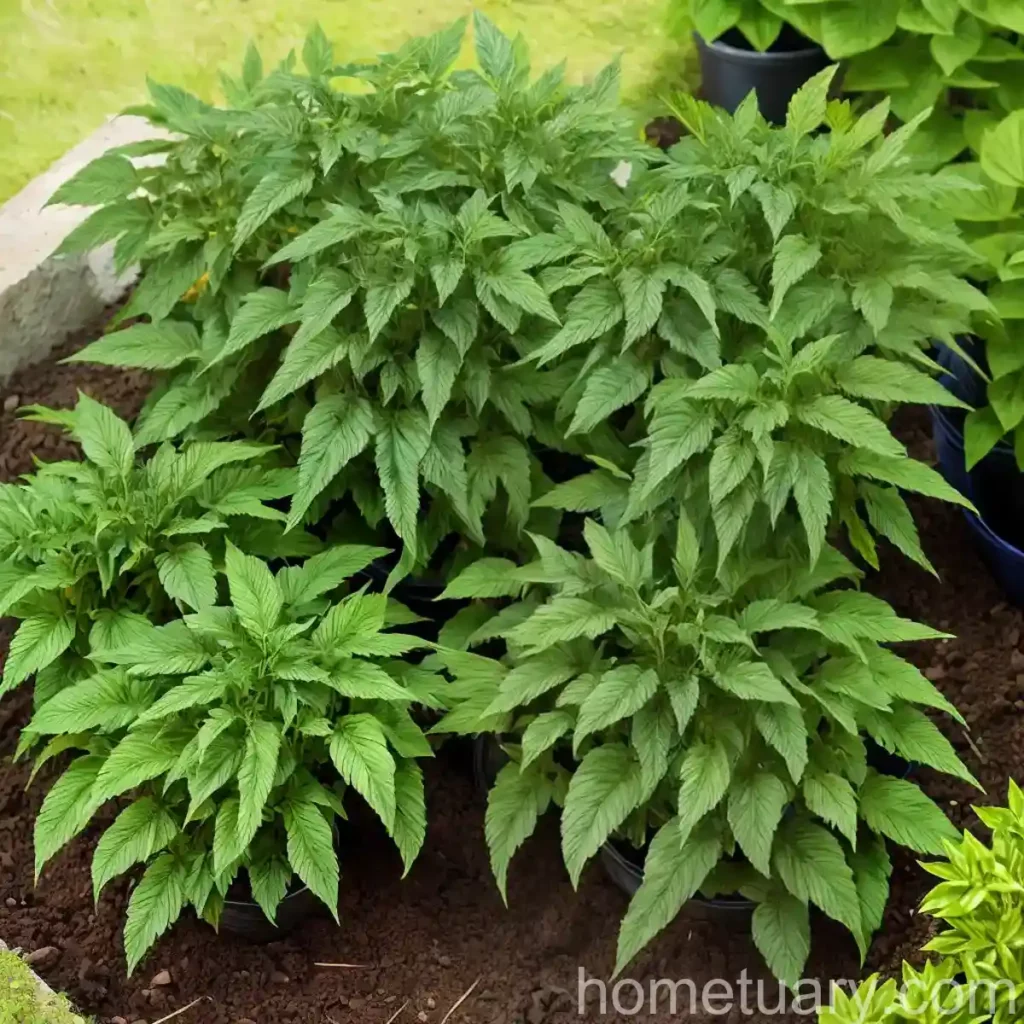The Fascinating World of Bistorta Officinalis ‘Superbum’: A Comprehensive Plant Guide
Introduction
The Bistorta Officinalis ‘Superbum’, also known as the snakeroot bistort, is a striking perennial plant that belongs to the Polygonaceae family. This beautiful plant is known for its vibrant flower clusters and its ability to thrive in a variety of habitats. Whether you are an experienced gardener or just starting with plants, this comprehensive plant guide will provide you with all the information you need to successfully cultivate and care for Bistorta Officinalis ‘Superbum’.
What is Bistorta Officinalis ‘Superbum’?
Bistorta Officinalis ‘Superbum’ is a species of flowering plant native to Europe, Western Asia, and North America. It is characterized by its densely packed, cylindrical flower spikes that emerge from a base of deep green, lance-shaped leaves. The plant typically reaches a height of 1 to 3 feet and is known for its vigorous growth and clump-forming nature.
Key Takeaways
To provide a comprehensive understanding of Bistorta Officinalis ‘Superbum’, in this guide we will cover the following aspects of the plant:
- Culture
- Uses
- Water
- Sunlight
- Fertilizer
- Soil
- Pruning
- Propagation
- Container Popularity
- Container Common Diseases
- Disease Diagnosis
- Common Pests
- Botanist’s Tips
- Fun Facts
- Links to External Resources
Let’s delve into each of these aspects in detail.
Culture
Uses
Bistorta Officinalis ‘Superbum’ is a versatile plant that can be used in various landscaping and gardening settings. Some common uses of this plant include:
- Borders: The striking flower clusters and dense foliage of Bistorta Officinalis ‘Superbum’ make it a perfect candidate for borders and edges of garden beds.
- Pollinator Gardens: The nectar-rich flowers of this plant attract bees, butterflies, and other pollinators, making it an excellent addition to pollinator-friendly gardens.
- Ground Cover: Due to its clump-forming nature and vigorous growth, Bistorta Officinalis ‘Superbum’ can be used effectively as a ground cover, especially in areas where erosion control is needed.
Water
Bistorta Officinalis ‘Superbum’ has moderate water needs and prefers consistently moist soil. While it can tolerate short dry spells, it thrives best in soil that is kept evenly moist. Proper watering is essential, especially during the plant’s active growth period in spring and summer.
Sunlight
When it comes to sunlight requirements, Bistorta Officinalis ‘Superbum’ thrives in partial to full sun. It is important to provide the plant with at least 4 to 6 hours of direct sunlight daily for optimal growth and flowering.
Fertilizer
A balanced, all-purpose fertilizer can be applied to Bistorta Officinalis ‘Superbum’ in early spring to support its growth and flowering. A slow-release fertilizer can also be incorporated into the soil to provide the plant with essential nutrients over an extended period.
Soil
Bistorta Officinalis ‘Superbum’ thrives in well-draining, fertile soil with a slightly acidic to neutral pH. It is adaptable to various soil types, including loamy, sandy, or clay soils. However, ensuring good drainage is crucial to prevent waterlogged conditions, which can be detrimental to the plant’s health.
Pruning
Pruning Bistorta Officinalis ‘Superbum’ is relatively low maintenance. Deadheading spent flower clusters can promote prolonged blooming and maintain the plant’s neat appearance. Additionally, removing any damaged or diseased foliage can help prevent the spread of diseases and maintain the plant’s overall health.
Propagation
Propagation of Bistorta Officinalis ‘Superbum’ can be achieved through division or seed germination. The following methods can be employed for successful propagation:
Division
- Divide mature clumps in early spring or fall.
- Carefully separate the root mass into smaller sections, ensuring that each division has adequate roots and healthy shoots.
- Replant the divisions at the same depth as the original plant, spacing them apart to allow for their natural growth and expansion.
Seed Germination
- Collect mature seeds from the plant after the flowering period.
- Sow the seeds in a prepared seedbed or containers filled with well-draining seed-starting mix.
- Keep the soil consistently moist and provide adequate sunlight for germination.
- Once the seedlings have developed several sets of true leaves, they can be transplanted to their permanent growing locations.
Container Popularity
Bistorta Officinalis ‘Superbum’ is well-suited for container cultivation, making it an attractive choice for individuals who wish to enjoy the plant’s beauty in a confined space or on patios and balconies.
Container Common Diseases
When grown in containers, Bistorta Officinalis ‘Superbum’ is susceptible to certain common diseases that may arise due to environmental stress, inadequate watering, or poor soil conditions. These diseases include:
- Powdery Mildew: A fungal disease that presents as white powdery patches on the plant’s foliage.
- Root Rot: Caused by overwatering or poorly draining soil, leading to rotting of the roots.
Disease Diagnosis
Early detection and swift action are crucial in managing diseases in container-grown Bistorta Officinalis ‘Superbum’. Regularly inspecting the plant for signs of disease, providing proper air circulation, and ensuring soil moisture control can help prevent and address disease issues effectively.
Common Pests
While Bistorta Officinalis ‘Superbum’ is relatively resistant to pests, it may occasionally encounter pest infestations that include:
- Aphids
- Spider Mites
- Snails and Slugs
Implementing appropriate pest management strategies, such as introducing natural predators or using targeted treatments, can help keep pest populations in check without causing harm to the plant or the environment.
Botanist’s Tips
To ensure the successful cultivation of Bistorta Officinalis ‘Superbum’, consider the following botanist’s tips:
- Mulching: Applying a layer of organic mulch around the base of the plant can help conserve soil moisture, suppress weed growth, and provide essential nutrients as it decomposes.
- Companion Planting: Pairing Bistorta Officinalis ‘Superbum’ with compatible companion plants can enhance the overall aesthetics and ecological balance of the garden. Suitable companion plants include astilbe, ferns, and hostas.
- Seasonal Care: Adapting maintenance practices to the plant’s seasonal needs, such as adjusting watering and fertilization, can contribute to its overall health and vitality throughout the year.
Fun Facts
Uncover the fascinating aspects of Bistorta Officinalis ‘Superbum’ with these intriguing facts:
- The plant’s genus name, “Bistorta,” is derived from the Latin words “bis” and “torta,” which refer to the plant’s twisted or spiraled root tubers.
- Bistorta Officinalis ‘Superbum’ has been historically used in traditional medicine for its astringent properties and as a remedy for various ailments.
- The vibrant blooms of Bistorta Officinalis ‘Superbum’ are not only visually appealing but also attract a diverse array of pollinators, contributing to the biodiversity of garden ecosystems.
Links to External Resources
For further exploration and in-depth information on Bistorta Officinalis ‘Superbum’, consider these valuable external resources:
- Royal Horticultural Society – Bistorta Officinalis
- Missouri Botanical Garden – Growing Bistorta Officinalis
In conclusion, Bistorta Officinalis ‘Superbum’ stands as a captivating addition to gardens and landscapes, with its graceful form, vibrant blooms, and adaptable nature. By understanding and implementing the recommended care practices, enthusiasts can fully appreciate the beauty and resilience of this remarkable perennial plant. Whether you are drawn to its ornamental appeal, ecological contributions, or historical significance, the Bistorta Officinalis ‘Superbum’ is a plant worthy of admiration and cultivation.
This comprehensive plant guide was created by a dedicated team of plant scientists to provide accurate and valuable insights into the cultivation and care of Bistorta Officinalis ‘Superbum’. The information presented serves as a reliable resource for plant enthusiasts, horticulturists, and individuals passionate about exploring the wonders of the natural world.















